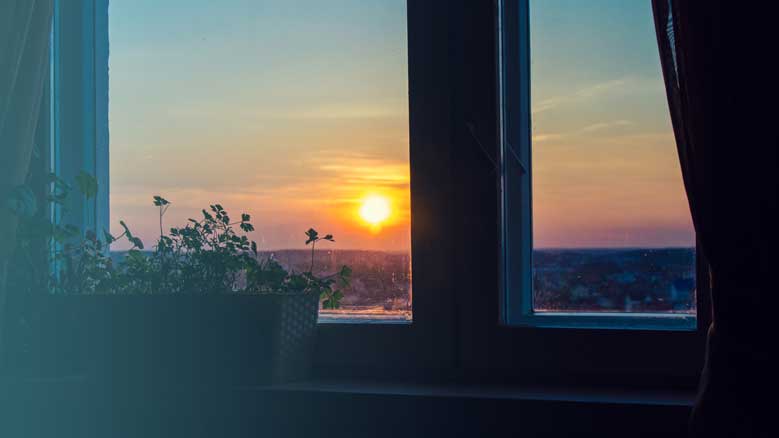 Most late afternoons in the fall I think, “Oh, my, it is getting dark so early.” I have to laugh that I am surprised. I say this even post-Thanksgiving, even though I have been watching the light wane for months. Down, down we go, to the shortest day, the longest night of the year.
Most late afternoons in the fall I think, “Oh, my, it is getting dark so early.” I have to laugh that I am surprised. I say this even post-Thanksgiving, even though I have been watching the light wane for months. Down, down we go, to the shortest day, the longest night of the year.
A woman at my meeting, Elizabeth Watson, who died in her 90s in 2006, used to talk to us at this time of year about the beauty of darkness. We’d be all weirded out and glum, starved for light, aching for the turning that the December winter solstice represents, and she’d say: Wait, think of the richness you have right now. I’ve found this in her writings: “We say that God is the Inner Light, but I want to affirm also the Inner Darkness, and I do not mean desolation or evil, but a quiet waiting and creativity.”
Elizabeth knew darkness. A night owl, she often stayed up late, writing. And she had survived a staggering personal tragedy, the sudden death of a beloved child. Yet she was not gloomy but instead a warm-hearted person revered in our community. When she looked me in the eye, I could tell that she loved me, but I had no idea why.
I’m no night owl. I like to be in bed by 10:00 p.m., but I sometimes awaken at 4:00 a.m. and have trouble getting back to sleep. A few years ago, rather than fight it, I began to think of this wakeful interlude as my soul time. It seemed that whatever I wasn’t addressing during the day, those things in the shadows, troubling things I’d prefer to ignore, were summoning me in the wee hours of the night. When I am wakeful now, I try to receive what needs to be acknowledged. I try not to push it away.
The body knows what it knows when it knows it. Just last night I realized that if I approach this wakefulness calmly, even when I am unable to put words to what is causing it, something moving in me or through me might be transformed, might be taken in, allowed to settle, and spirited away.
When I think of the seasonal transition, light to dark, what comes back to me is one particular day years ago. It was on a weekend when I wasn’t teaching, and I lay on my bed in the afternoon. I was in my 30s, single, and still trying to imagine myself into my life. My house back then, a rental, sat on the edge of a small central Minnesota town. I don’t think I’ve ever seen another house like it. It was made of cinderblocks painted sea green and had dark green shutters. The concrete front stoop had cracked years before when an earthquake rumbled through. Just beyond my house were farm fields. I awakened there to roosters crowing.
My bedroom, which had been painted sky blue, looked out over my small backyard, where there was a clothesline, a gnarled apple tree, a freely vining yellow rose sprawling over a hedge, and, just outside the bedroom window, old-fashioned pink peonies. My faded bedroom curtains, left behind by the previous tenant, were blue like the walls, and they had large pink peony blossoms on them, sweetly echoing what stood in the flowerbed just beyond, and softening the line between what is inside and what is outside.
On that particular dreamy day, thinking of nothing at all, I lay on the bed gazing out the window at the sky. I stayed put for hours watching the afternoon light ever so gradually dim to dusk, then to semi-dark, then to full dark. I felt an unusually broad and deep ease, no nervous stir of any kind.
I am hard-pressed to pinpoint both why I remember this experience decades later, and why I enjoyed it so much. I could say I am easily entertained. I could say it was a wildly stressful time, and this peace was a balm. I could say it was a welcome counterpoint to the tension I felt in that house, which manifested in bad dreams of a family fighting. I got the idea to go to the nursing home to visit the former owners, but I never did so. I wondered if knowing more about them would have helped me clear out whatever it was they had done in those rooms, whatever it was they had left behind.
I could say that lying there on my bed that day put me in touch with my animal nature, with how soothing it is to be quietly alert to the world, to watch it and see what it does. The body wants to be awash in subtlety, in beauty. But I think mostly I was in touch with how accessible profound peace actually is, if a person can only open herself to it. Just the ordinary turning of day to night could provide it. It was that simple.
I saw there was trembling in that transition, and tenderness in the quality of the light late in the day. I heard the almost audible sigh that comes as the light releases itself, and then I felt settle over me the soft cover of night that helps us sleep.




Comments on Friendsjournal.org may be used in the Forum of the print magazine and may be edited for length and clarity.